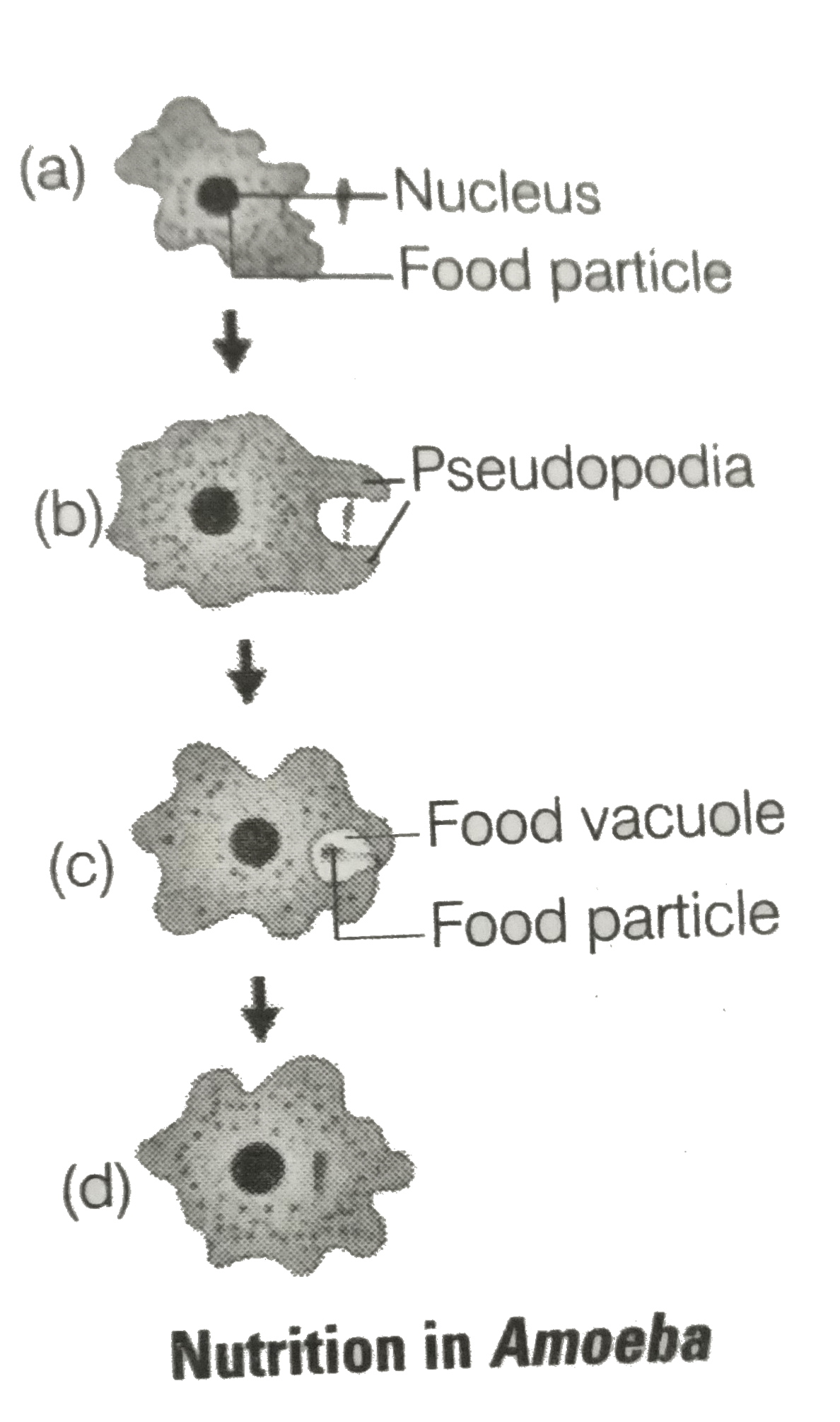Explain the process of digestion in the buccal cavity with a note on the arrangement of teeth.
Step-by-Step Solution:
1. Introduction to Digestion:
- Digestion is the process of breaking down complex food into simpler forms. This involves both mechanical and chemical processes.
2. Role of the Buccal Cavity:
- The buccal cavity, also known as the oral cavity, is where the initial stages of digestion occur. It includes the mouth and the surrounding structures above the pharynx.
3. Ingestion of Food:
- The mouth is the entry point for food, where ingestion takes place.
4. Mechanical Breakdown:
- The teeth play a crucial role in mechanically breaking down food through chewing. This process is essential for increasing the surface area of food for further digestion.
5. Role of the Tongue:
- The tongue aids in mixing the chewed food with saliva, which is secreted by salivary glands. This mixing helps in forming a soft mass called bolus.
6. Chemical Breakdown:
- Saliva contains an enzyme called salivary amylase, which begins the chemical digestion of carbohydrates by breaking them down into simpler sugars.
7. Formation of Bolus:
- Once the food is adequately mixed with saliva, it forms a bolus, which is then pushed towards the pharynx.
8. Transportation to the Stomach:
- The bolus is transported down the esophagus through a process called peristalsis, which involves wave-like muscle contractions.
9. Arrangement of Teeth:
- Humans typically have 32 teeth arranged in a specific order: incisors, canines, premolars, and molars.
- Incisors: These are the front teeth, used for biting food.
- Canines: Located next to the incisors, these sharp teeth are used for tearing food.
- Premolars: These teeth are used for both tearing and crushing food, having a flat biting surface.
- Molars: The largest teeth at the back, primarily used for grinding food due to their large flat surfaces.
10. Conclusion:
- The buccal cavity is essential for the initial digestion of food, involving both mechanical and chemical processes, facilitated by the arrangement and function of various types of teeth.
- Digestion is the process of breaking down complex food into simpler forms. This involves both mechanical and chemical processes.
- The buccal cavity, also known as the oral cavity, is where the initial stages of digestion occur. It includes the mouth and the surrounding structures above the pharynx.
- The mouth is the entry point for food, where ingestion takes place.
- The teeth play a crucial role in mechanically breaking down food through chewing. This process is essential for increasing the surface area of food for further digestion.
- The tongue aids in mixing the chewed food with saliva, which is secreted by salivary glands. This mixing helps in forming a soft mass called bolus.
- Saliva contains an enzyme called salivary amylase, which begins the chemical digestion of carbohydrates by breaking them down into simpler sugars.
- Once the food is adequately mixed with saliva, it forms a bolus, which is then pushed towards the pharynx.
- The bolus is transported down the esophagus through a process called peristalsis, which involves wave-like muscle contractions.
- Humans typically have 32 teeth arranged in a specific order: incisors, canines, premolars, and molars.
- Incisors: These are the front teeth, used for biting food.
- Canines: Located next to the incisors, these sharp teeth are used for tearing food.
- Premolars: These teeth are used for both tearing and crushing food, having a flat biting surface.
- Molars: The largest teeth at the back, primarily used for grinding food due to their large flat surfaces.
- The buccal cavity is essential for the initial digestion of food, involving both mechanical and chemical processes, facilitated by the arrangement and function of various types of teeth.
Topper's Solved these Questions
- DIGESTION AND ABSORPTION BOOK - NCERT EXEMPLAR ENGLISHCHAPTER - DIGESTION AND ABSORPTION EXERCISE - Short Answer Type Questions
10 Videos
- CHEMICAL COORDINATION AND INTEGRATIONBOOK - NCERT EXEMPLAR ENGLISHCHAPTER - CHEMICAL COORDINATION AND INTEGRATIONEXERCISE - Long Answer Type Questions
5 Videos
- EXCRETORY PRODUCTS AND THEIR ELIMINATION BOOK - NCERT EXEMPLAR ENGLISHCHAPTER - EXCRETORY PRODUCTS AND THEIR ELIMINATION EXERCISE - Long Answer Type Questions
6 Videos
Similar Questions
Explain the process of IVF
View SolutionExplain the process of translation.
View SolutionExplain the process of nutrition in Amoeba.

View SolutionExplain the process of MOET ?
View SolutionExplain the process of breathing in man .
View SolutionExplain the process of oogenesis in humans.
View SolutionIn Amoeba the process of digestion is
View SolutionExplain the process of transcription.
View SolutionExplain the process of glycolysis.
View SolutionExplain the process of electrolysis.
View Solution
